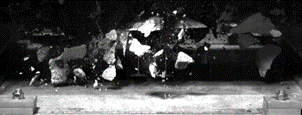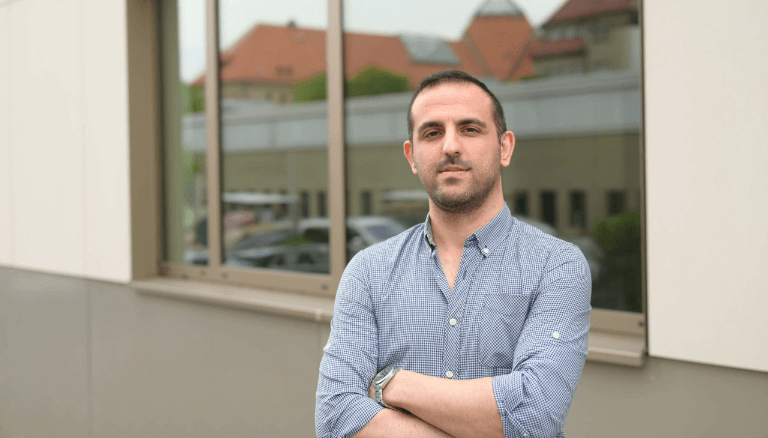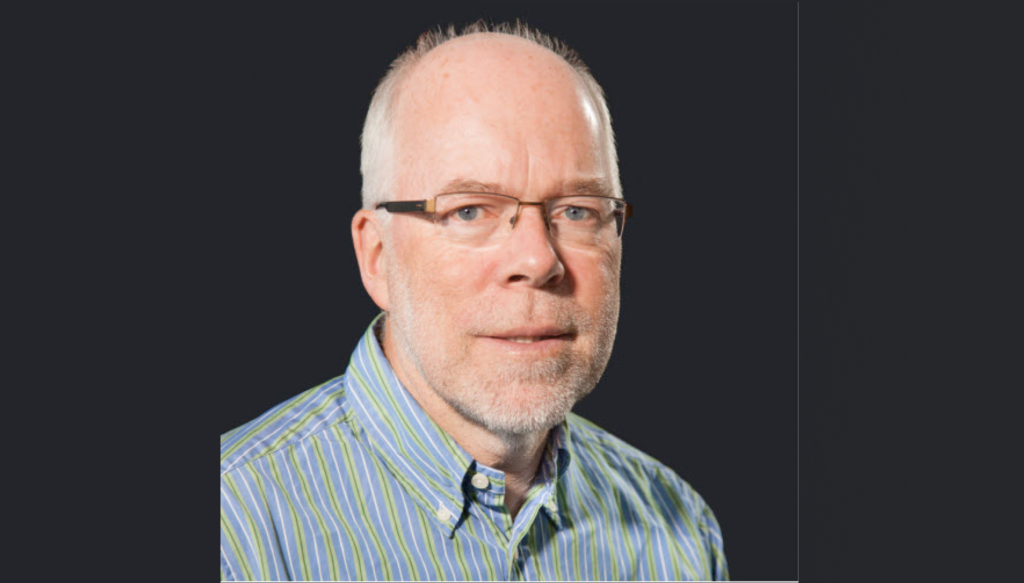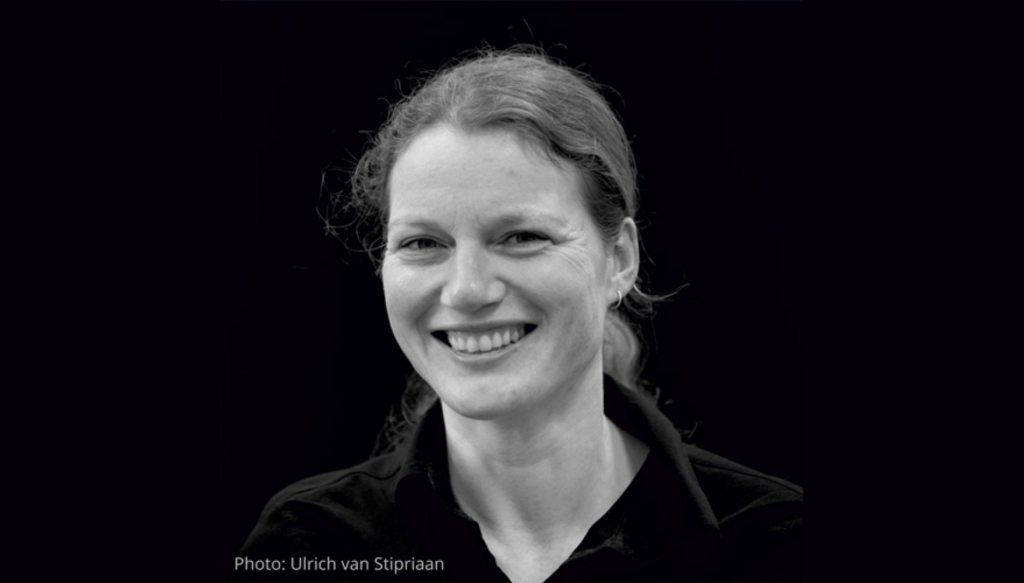Projects Overview C1/III Concepts of photogrammetric of 3D particle tracking for energy dissipation analyses in impact experiments
C1/III: Concepts of photogrammetric of 3D particle tracking for energy dissipation analyses in impact experiments
Motivation
Manifold analyses in the context of impact events require the quantitative determination of the motion of fragments on the rear side of a probe. Herein, optical 3D measurement techniques may depict a powerful tool for spatiotemporal analyses of dynamic processes. They offer the possibility of determining 3D motion vectors or trajectories for a large number of objects simultaneously in a 3D observation space with accuracies in the sub-millimetre range. Using stereoscopic ultra-high-speed camera setups, a spatial resolution beyond 1 MHz can be achieved. Beyond 3D deformation and crack analyses, they also allow for the determination of trajectories and shape parameters of fragments in impact experiments as a basis for energy dissipation analyses.
State of Research and preliminary work
3D particle velocimetry (3D-PTV, MA1), based on stereo photogrammetric image sequence acquisition, combined with a data processing chain based on spatio-temporal matching, has proven to be a very powerful tool for the determination of 3D velocity fields and Lagrangian flow information in the field of flow measurements. A recent study has also shown the applicability of photogrammetric techniques for analyses of the behaviour of fragments in hypervelocity impact events (MA2). An interesting option herein is the use of time-resolved tomographic 3D reconstruction techniques on the basis of multiple view image sequence data (MA3).

Debris cloud of an impact event (project A5)
Scientific Task and project goals
Stereo photogrammetric image acquisition systems consisting of two (or rather more) cameras form a basis both for the determination of the size and 3D shape as well as the velocities and 3D motion trajectories of fragments in impact events. From a photogrammetric point of view, this task comes with special challenges in 3D object reconstruction and in reliable spatio-temporal matching. So far, this task has so far only been solved under rather restrictive experimental constraints (MA2). We intend, to employ model knowledge to restrict solution spaces and to enable the use of optical object tracking techniques even under demanding experimental conditions.
Interaction with other projects of Cohort III
The methods for fragment shape and motion analysis developed in C1 will primarily be used in A5 and A6. Beyond this, they are of large general interest for impact experiments and beyond.
References
[MA1] Maas, H. G., Gruen, A., Papantoniou, D., 1993: Particle tracking velocimetry in 3-dimensional flows. 1. Photogrammetric determination of partacle coordinates. Exp. Fluids 15(2), pp. 133–146
[MA2] Watson, E.; Maas, H.-G., Schäfer, F., Hiermaier, S., 2018: Trajectory based 3D fragment tracking in hypervelocity impact experiments. Int. Arch. Photogramm. Remote Sens. Spatial Inf. Sci. XLII (2018), Nr. 2, pp. 1175–1181
[MA3] Westfeld, P., Maas, H.-G., Pust, O., Kitzhofer, J., Brücker, C. (2010): 3-D Least Squares Matching for Volumetric Velocimetry Data Processing. Proceedings of the 15th Int Symp on Applications of Laser Techniques to Fluid Mechanics. Lisbon, Portugal. 05-08 July, 2010
Contributors

© Dominik Junger
Doctoral Researcher
MILAD DAVOUDKHANI, M.SC.
Institute of Photogrammetry and Remote Sensing
Helmholtzstraße 10
01062 Dresden
Germany
- milad.davoudkhani@tu-dresden.de
- +49 351 463 33144

Principal Investigator
Prof. Dr. habil. Hans-Gerd Maas
Institute for Photogrammetry and Remote Sensing
Helmholtzstraße 10
01069 Dresden
Germany
- hans-gerd.maas@tu-dresden.de
- Institute
- +49 351 463 32859
- +49 351 463 37266

in cooperation with
apl. Prof. Birgit Beckmann
Institute of concrete structures
ABS, Floor 05, Room 027
August-Bebel-Straße 30/30A
01219 Dresden
Germany
- Birgit.Beckmann@tu-dresden.de
- Institute
- +49 351 463 38687
- +49 351 463 37289

